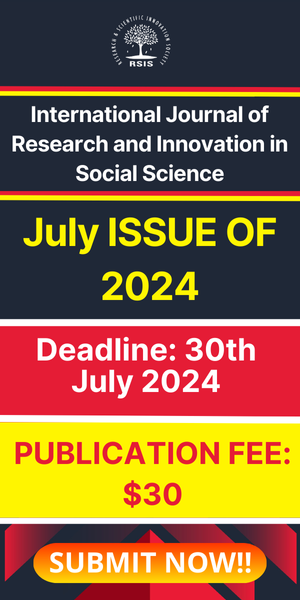Mathematical Modeling of Diffusion Controlled Drug Release Profiles from Nanoparticles
- June 6, 2019
- Posted by: RSIS
- Category: Biomedical Engineering
International Journal of Research and Scientific Innovation (IJRSI) | Volume VI, Issue V, May 2019 | ISSN 2321–2705
Mathematical Modeling of Diffusion Controlled Drug Release Profiles from Nanoparticles
Ibtihag Yahya1, Razan Atif1, Lina Ahmed1, Tahleel Salah Eldeen1, Akram Omara1, Megdi Eltayeb1*
1Department of Biomedical Engineering, Sudan University of Science and Technology, PO Box 407, Khartoum, Sudan
* Corresponding author. Dr. Megdi Eltayeb
Abstract:-This paper is mainly focused on the diffusion-control mechanism, involved in the release process based on mathematical modeling approaches that were collected from the literature which was developed as novel method to estimate and describe the drug release from matrix devices and simulations of drug release from these matrix devices using MATLABsoftware to conduct a comparison in order to study and differentiate the effect of each factor on the drug release profile.The aim of this paper was to establish models and to differentiate the kinetic release behavior of drug models from polymeric nanoparticles. Mathematical modeling of the release profiles was conducted, showing that the reduction in the thickness of the device as 42, 35 and 20 × 10-9 m for C3, C2 and C1 respectively, when fixes the diffusion coefficient value results in inversely proportion relation as increase in the release rate due to the decreases in the thickness values and in other hand when fixed the thickness value and varying the diffusion coefficient as 0.63, 2.50 and 1.01 × 10-15 cm²/s for C4, C5 and C6 respectively, this resultsin directly proportional relation as the release rate increasing due to the increase in the diffusion coefficient. The simulation results validated the use of the mathematical models’ equations in the field of manufacturing drug delivery systems and facilities to select an appropriate carrier system geometry for the drug and help in the predetermining the drug release.
Keywords: Mathematical Modeling, Diffusion, release profiles, nanoparticles
I. INTRODUCTION
Controlled drug release is based on diffusion through polymer nanoparticles, swell or erosion of polymers through different characteristics such as ion exchange and osmotic effects and various other phenomena[1-3]. Further, when designing controlled-release systems, the identification and understanding of the specific mechanisms and the intricate in the release process and the distinction between them and the understanding of their respective characteristics, is more important than the understanding of one mechanism contributory in a given time in the drug delivery and the medication administration process [4, 5]. The most frequent design to acquire a controlled drug release is by establishing a drug in a polymer nanoparticles matrix. Thus, the polymer that is used for this purpose can be a hydrophilic or a hydrophobic matrix based on the nature of the drug that can be closed or submerged in hydrogel and be compatible with varied and different mechanisms of the drug delivery controlled release systems [6-8].


